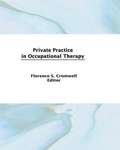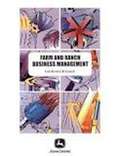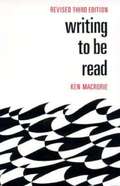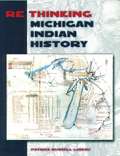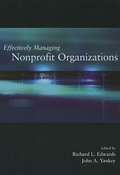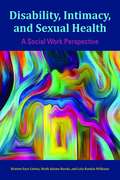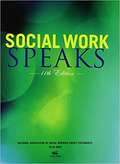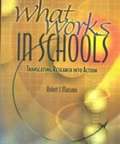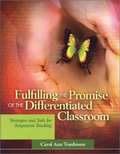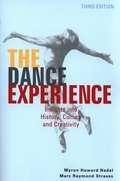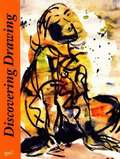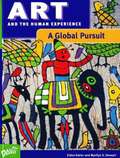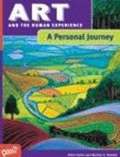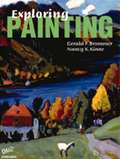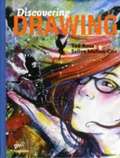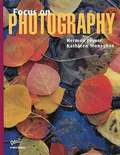- Table View
- List View
ServSafe Coursebook
by National Restaurant AssociationDelivering comprehensive training of key food safety concepts, SERVSAFE COURSEBOOK is the ideal solution for the academic setting, multiple-day training or individuals in need of more extensive food safety training. <p><P>The content in ServSafe Coursebook goes beyond the principles found in ServSafe Manager Book (formerly Essentials) and adds greater depth and breadth of food safety practices by featuring expanded sections on food defense, high-risk populations, active managerial control, and crisis management.
Private Practice in Occupational Therapy
by Florence CromwellValuable insights into the potentials, risks, and excitement of establishing a private practice in occupational therapy. This groundbreaking volume provides general and specific ideas to help guide the OT professional who is considering independent practice.
Welding (Fundamentals of Service Series)
by Deere Company StaffThe main purpose of this manual is to explain the different types of welding processes, cutting, brazing, soldering, surfacing, design of welds, properties of metals and welding safety. For the novice, this manual is a training guide. All-new welding projects at the end of the book augment this training. For the journeyman, it is a reference. This manual can be used by anyone -- experienced mechanics and shop trainees; as well a vocational students and interested laymen. It starts with the basics and builds your knowledge step-by-step in a very structured manner, making the information easy to understand.
Power Trains: A Service, Testing, and Maintenance Guide for Power Trains in Off-road Vehicles, Trucks, and Buses (7th edition)
by John Deere CompanyThis manual is aimed at helping experienced mechanics, shop trainees, vocational students and lay readers to service, test and maintain power trains.
Shop Tools
by Deere CompanyTools don't make the service technician - but they help. Knowing how to use and care for them will put you a step ahead of the crowd. In this book, we'll cover the following tools: Screwdrivers, Hammers, Pliers, Wrenches, Chisels, Punches, Files, Hacksaws, Vises, Clamps, Twist Drills, Taps and Dies, Screw Extractors, Pullers, Pick-Up Tools, Inspection Mirrors, Tubing Cutters, Soldering Equipment, Feeler Gauges, Micrometers, Dial Indicators, Spring Testers, Pressure Gauges, Speed-Measuring Tools
Farm and Ranch Business Management
by John DeereFarm and Ranch Business Management - A practical guide for the agribusiness manager. It explains in plain English the principles and techniques that every farmer and rancher must know. Google Books
Writing to Be Read (Revised Third Edition)
by Ken MacrorieThis book intends to give a thorough writing course to students that will help them express themselves efficiently.
Modern Automotive Mechanics
by James E. DuffyMODERN AUTOMOTIVE MECHANICS was written and revised to provide an easy to understand, up-to-date book summarizing the OPERATION and REPAIR of all makes and models of cars. The text uses a "building block" approach that starts simple and gradually progresses to the more complex. Short sentences, concise definitions, and thousands of color illustrations will help you learn quickly and easily.
Rethinking Michigan Indian History
by Patrick Russell LebeauRethinking Michigan Indian History is a teaching tool that honors the Chippewa, Ottawa, and Potawatomi and the twelve federally recognized tribes of Michigan by recognizing their role and place in Michigan history-- exploring what most people know (or do not know) about them. Each lesson includes a background narrative, a set of hands-on, tactile activities, and provides easily understood and visual resources. Rethinking Michigan Indian History explores large issues of Indian stereotypes, the narrow focus on "great" Indian men, the lack of knowledge about treaties and treaty rights, and the role of maps to mislead or distort thinking about how history unfolds and the complexities of land ownership. The lesson exploring Indian stereotypes identifies their existence not only in U.S. consumer culture but also in K-12 classrooms. The goal, however, is not to rebuke the consumer for having bought Big Chief Sugar or the teacher for having young students construct one-dimensional canoes, paddles and Indians out of paper and glue but to use those activities as a demonstration of what most people know about Indians. From this point, a foundation of facts can begin to replace stereotypes in the learning process. Demonstrating further how popular influences can control knowledge, the lesson on "great" Indian men shows how the popular preference for biographies of famous Indian warriors, like Pontiac and Tecumseh or individual women, like Pocahontas and Sacagawea, narrows an understanding of Indians to symbolic representations and issues and ignores their ongoing culture. The lesson on Indian treaties and maps explains and visually shows the reason the Chippewa, Ottawa, and Potawatomi lived in Michigan in 1760 and live in Michigan today in roughly the same places. Treaties are explored in a manner understandable to fourth graders through adults.
Effectively Managing Nonprofit Organizations
by Richard L. Edwards John A. YankeyEdwards (social work, Rutgers) and Yanky (family and child welfare, Case Western Reserve U. ) present a revision and expansion of two earlier books, Skills for Effective Human Services Management (1991) and Skills for Effective Management of Nonprofit Organizations (1998). Featuring contributions from 31 American academics, consultants, and nonprofit professionals, the text offers nonprofit managers a guide to the skills and competencies needed to lead today's nonprofit organizations successfully. The text is organized around the "competing values framework," a meta-theoretical model of organizational and managerial effectiveness. Coverage includes an overview of the framework followed by sections on its four skill areas--boundary-spanning, human relations, coordinating, and directing--and discussion of the skills needed to manage in turbulent times. For mid- and upper-level managers, and students of nonprofit or public management. Annotation ©2007 Book News, Inc., Portland, OR (booknews.com)
Disability, Intimacy, and Sexual Health: A Social Work Perspective
by Kristen Faye Linton Heidi Adams Rueda Lela Rankin Williams"Sexuality is a key aspect of human development and identity, yet people with disabilities frequently encounter social and political barriers to achieving healthy, autonomous intimate relationships. Society tends to associate disability with asexuality and often labels sexual behaviors among people with disabilities as problematic or deviant. Faced with these assumptions and resultant policies, how can social workers meet the needs of this diverse population across the life course? In this book, Linton, Adams Rueda, and Rankin Williams compile comprehensive research and candid interviews with social workers to explore the complicated intersection of disability and sexuality. The book begins by detailing historical violations of the sexual and reproductive rights of people with disabilities, including forced castration and sterilization. It then explores current issues of sexuality and disability throughout the life course, starting with childhood and adolescence. The authors examine the increased risk of abuse and victimization that people with disabilities face while in romantic or sexual relationships and provide practice recommendations to help combat factors that contribute to this vulnerability. Other milestones across the life course are also explored, such as pregnancy and parenting, marriage and cohabitation, and intimacy in older adulthood. Throughout the book, the authors examine the micro, meso, and macro systems that affect the lives and relationships of people with disabilities. This book touches on psychiatric, intellectual, developmental, learning, neurological, and physical disabilities and gives voice to both practitioners and their clients. It's an unflinching look at the pressing challenges professionals can face while serving people with disabilities, essential for students, academics, policymakers, and practitioners in a variety of settings who wish to advocate for the full sexual citizenship of people with disabilities"--The publisher.
Social Work Speaks
by National Association of Social WorkersThe 11th edition of Social Work Speaks is a comprehensive and unabridged collection of policies adopted and revised by the NASW Delegate Assembly in 2017. The Delegate Assembly, NASW s key policymaking body, meets every three years. The policy statements set the parameters for NASW s positions and actions on a broad range of public policy and professional issues. This edition includes 24 updated policy statements on topics ranging from human trafficking and transgender and gender nonconforming people to immigrants and refugees. Social Work Speaks is a reference tool that represents the collective thinking of thousands of social workers across all fields of practice. This user-friendly resource can assist in developing organizational responses to policy issues, conducting policy analysis, and working in advocacy coalitions. Social Work Speaks is a first-rate introductory social policy text that will spark dynamic and valuable debates on public policy and the role of social work in leading change. Social workers who want to be informed and involved in policy analysis, advocacy for social policies, or the formulation of future policy statements will find the 11th edition of Social Work Speaks a useful resource.
DC Electronics
by Heath CompanyThe EB-6101A DC Electronics course presents the basic principles in the study of electronics.
What Works in Schools: Translating Research into Action
by Robert J. MarzanoSchools can and do make a difference in students' lives. Make your school and personal instruction even more effective using the insights offered in this textbook. Drawing on 35 years of research, the author defines the factors most strongly affecting student achievement and offers specific and attainable action steps to implement successful strategies for student achievement and effective public education.
Fulfilling the Promise of the Differentiated Classroom: Strategies and Tools for Responsive Teaching
by Carol Ann TomlinsonEach year, teachers welcome a new group of students to their classroom. And each year, the same thoughts pass through teachers minds: What will this class be like? Am I a good enough teacher to reach every student, or will I fail some of them? Good teaching begins with good relationships and a passion for students and content that students can see, says differentiation pioneer Carol Ann Tomlinson. To truly engage learners, teachers must realize that how they teach is as important as what they teach. In this book, Tomlinson revisits her responsive teaching principles to examine how successful teachers handle the three interdependent elements of the differentiated classroom: The needs of students, The response of teachers, and The role of curriculum and instruction to address learner needs. Using real-life stories, Tomlinson illustrates how teachers manage the interaction of these elements to create meaningful ties to each child. She explores both theory and practice, suggesting helpful strategies and routines and providing a collection of surveys, handouts, and guides that will help teachers organize their efforts and achieve their goals. The promise of the differentiated classroom is the promise that every student will feel affirmed, engaged, and supported by the teacher. Although each student enters the classroom with different needs and experiences, Tomlinson shows that the proper response to such diversity helps students discover the power of knowledge to reveal, amplify, and develop the best that is in them.
The Dance Experience: Insights into History, Culture, and Creativity (3rd Edition)
by Myron Howard Nadel Marc Raymond StraussProviding an understanding of the history, evolution, and universality of dance as an art form, this guidebook explores the significance of dance in culture, the relationship of dance to other art forms, the contributions of great pioneering choreographers, dancers, and teachers, and the creative process. Highlighting an extensive range of types of dance—including ballet, modern, jazz, tap, folk, ethnic, and social—this comprehensive collection features a variety of engaging essays written by experts in their respective fields. Students of dance, professionals, instructors, and enthusiasts will learn what to look for during a performance, and how to appreciate dance styles from around the world. This newly revised edition includes five new chapters and an extensive, annotated appendix of film resources giving helpful suggestions for viewing that will enhance the dance experience.
Discovering Drawing
by Ted RoseWith this book, students bridge the gap between art instruction, artistic impression, and personal discovery as they explore all facets of the drawing process. Covers: Exercises, tips and captions enhance student understanding; Techniques and sidebars; Artist biographies and high-interest anecdotes personalize art history and the drawing experience; In-depth artist profiles allow students to examine how contemporary artists view their own work and the creative process.
The Visual Experience (2nd Edition)
by Jack Hobbs Richard SalomeDesigned for students, this volume explores the expression and construction of art, and discusses the creative and technical processes of art. The book consists of different elements that will help you understand what art is, how it is made, and how it can make your life richer.
Roots Of Art Education Practice (Art Education In Practice Ser.)
by Mary Ann StankiewiczArt teachers play many roles. Their professional practices include instructing students, planning lessons and curriculum units, diagnosing learning or behavioral problems, organizing and distributing materials for art making and evaluating student learning. In addition to the tasks directly related to classroom instruction, art teachers often act as art therapists who help individual students use their art to grow emotionally, as college and vocational counselors, exhibition preparers, public relations advocates for the visual arts and for art in the community, art critics in regard to student and community art, art historians and teachers of art history, philosophers of art, cultural anthropologists, graphic designers, and artists in their own right.
Art and the Human Experience: A Global Pursuit
by Eldon Katter Marilyn G. StewartLEVEL: Middle School. Teach the BIG IDEAS using the basic foundations of art. Elements and Principles -- Focus on mastering art's building blocks: Line and pattern; Light, value, and contrast; Proportion and scale, and more. Art History -- Focus on the Western world: Covers the ancient world to the present; Connects to each chapter's themes; Timeline and historical context in every chapter. Multicultural -- Focus on world cultural contributions to art: Native North America; China and Korea and more; Maps in every chapter.
Art and the Human Experience: A Personal Journey
by Eldon Katter Marilyn G. StewartLEVEL: Middle School. Teach the BIG IDEAS using the basic foundations of art. Skills and Techniques -- Focus on basic skill development: Gesture and contour; Proportions; Perspective and more. Art History -- Focus on major genres: Portraits; Fantasy; Architecture and more. Multicultural -- Focus personal encounters with diverse artists: Haiti; Puerto Rico, Israel, and more. Maps in every chapter.
Art and the Human Experience: A Personal Journey
by Eldon Katter Marilyn G. StewartLEVEL: Middle School. Teach the BIG IDEAS using the basic foundations of art. Skills and Techniques -- Focus on basic skill development: Gesture and contour; Proportions; Perspective and more. Art History -- Focus on major genres: Portraits; Fantasy; Architecture and more. Multicultural -- Focus personal encounters with diverse artists: Haiti; Puerto Rico, Israel, and more. Maps in every chapter.
Exploring Painting (2nd edition)
by Gerald F. Brommer Nancy K. KinneThis complete guide to painting provides a comprehensive overview of painting techniques, tools, and traditions, while fully explaining such painting fundamentals as master, non-traditional subjects, and up-to-date safety precautions.
Discovering Drawing (2nd edition)
by Ted Rose Sallye Mahan-CoxWhat Is Drawing?, Elements and Principles of Design, Basics, Still Life, Drawing Landscapes, The Built Environment, Portraits, The Figure, Drawing Animal, The Expressive Language are explained in ten chapters of this book.
Focus on Photography
by Herman Joyner Kathleen MonaghanTo get the most out of any tool, it is valuable to understand its key features and intended use. In detailing the unique design and features in this textbook, the following will help make focus on photography the most valuable tool in your photographic studio.

